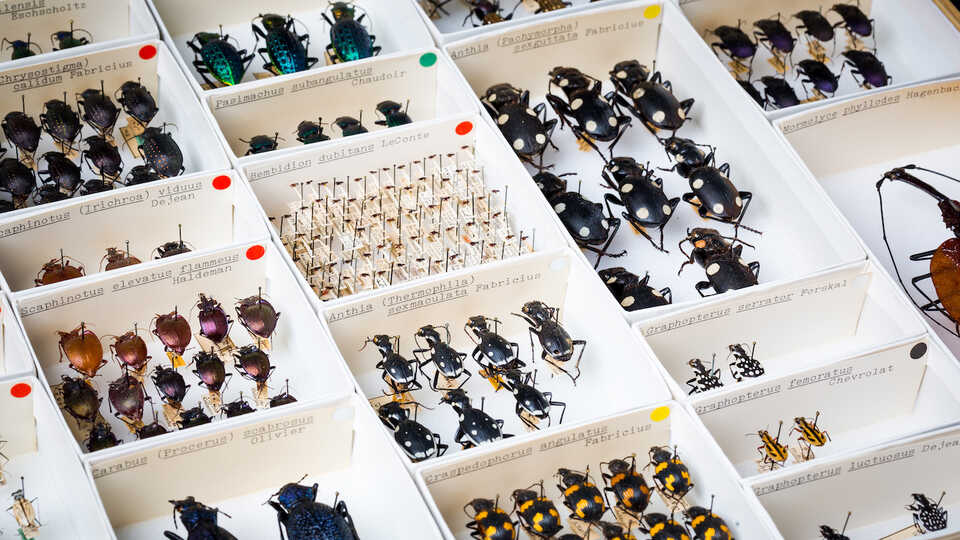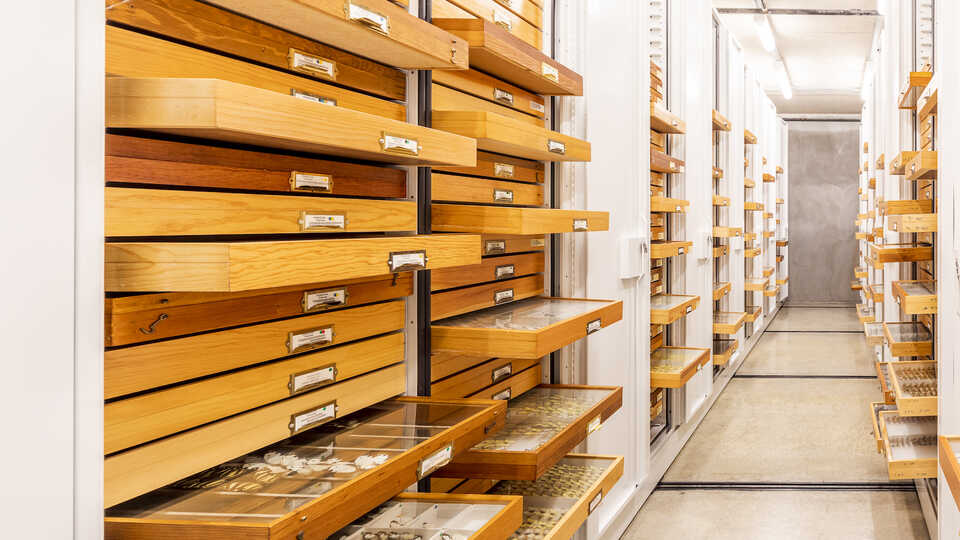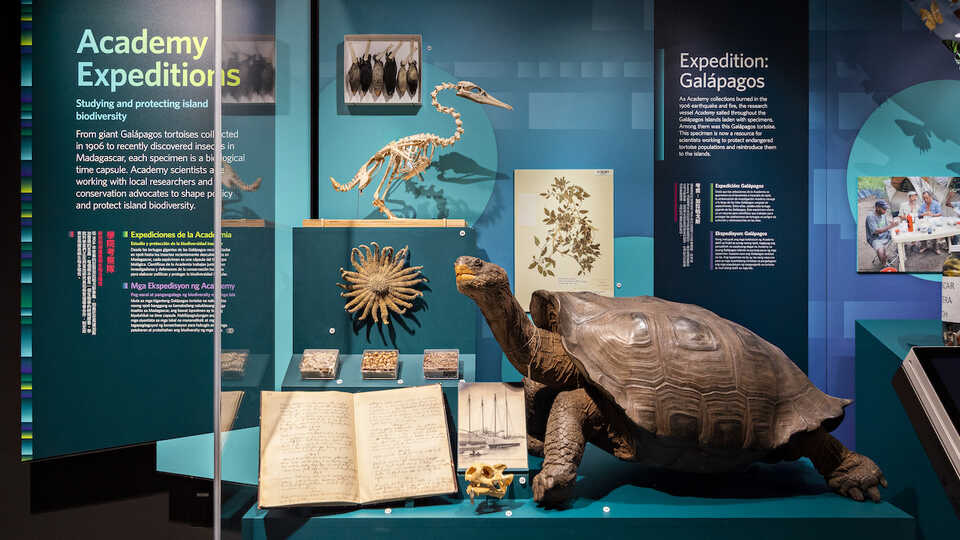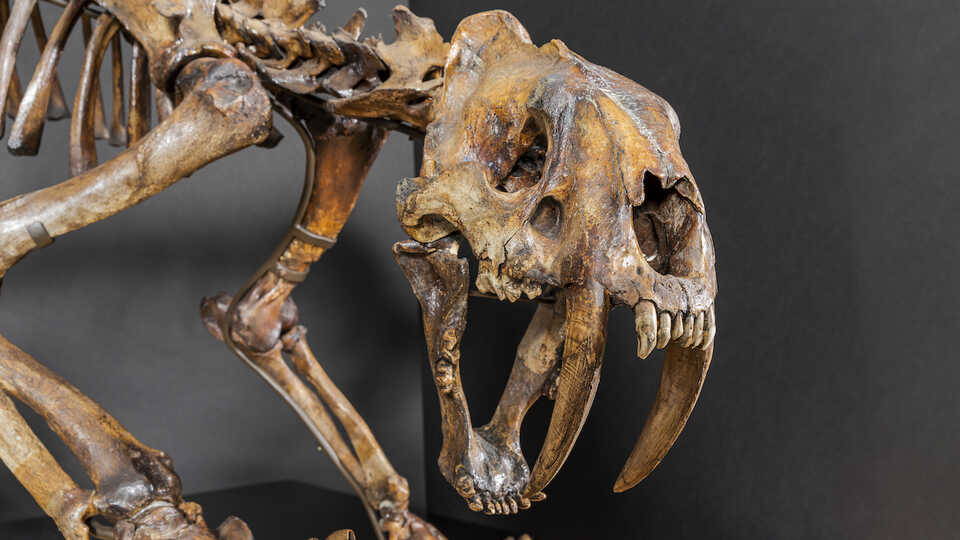The California Academy of Sciences is a renowned scientific and educational institution with a mission to regenerate the natural world through science, learning, and collaboration. Based in San Francisco’s Golden Gate Park, it is home to a world-class aquarium, planetarium, and natural history museum, as well as innovative programs in biodiversity science, environmental learning, and collaborative engagement—all under one living roof. Museum hours are 9:30 am – 5:00 pm Monday – Saturday, and 11:00 am – 5:00 pm on Sunday. Admission includes all exhibits, programs, and shows. For daily ticket prices, please visit www.calacademy.org or call (415) 379-8000 for more information.
Effort connects more than a billion objects in scientific collections across 73 museums in 28 countries
SAN FRANCISCO, CA (March 23, 2023) – A group of natural history museums— including the Smithsonian National Museum of Natural History in Washington, D.C., the American Museum of Natural History in New York City, the Natural History Museum in London, and the California Academy of Sciences in San Francisco—has mapped the total collections from 73 of the world’s largest natural history museums in 28 countries.
This is an important first step of an ambitious effort to inventory global holdings that can help scientists and decision makers find solutions to urgent, wide-ranging issues such as climate change, food insecurity, human health, pandemic preparedness, and wildlife conservation.
Home to nearly 46 million scientific specimens from around the world, the Academy’s research collections provide an extensive record of life on Earth. This vast library of life, along with natural history collections from around the world, provides a unique window into the planet’s past, and is increasingly being used to make actionable forecasts to chart our future. Although museums have a strong tradition of specimen interchange and coordinated collecting, training, and digitization, this new collaboration imagines a global collection composed of all the collections of all the world’s museums, intentionally removing barriers to consolidating our world’s natural heritage under one vision.
To better understand this immense, untapped resource, Academy researchers collaborated with lead scientists from a dozen large natural history museums to create an innovative but simple framework to rapidly evaluate the size and composition of natural history museum collections globally. The findings were published today in Science magazine in the paper, “A Global Approach for Natural History Museum Collections.”
The survey organizers created a methodology that could rapidly survey collection holdings across museums by creating a common vocabulary of 19 collection types spanning the entirety of biological, geological, paleontological, and anthropological collections and 16 terrestrial and marine regions that cover the entirety of the Earth.
“We wanted to find a fast way to estimate the size and composition of the global collection so that we could begin to build a collective strategy for the future,” said lead author Kirk Johnson, Sant Director of the Smithsonian National Museum of Natural History. Johnson co-led the effort along with Ian F. P. Owens (formerly at the Natural History Museum in London and now the Executive Director of the Cornell Laboratory of Ornithology) in collaboration with more than 150 museum directors and scientists representing 73 natural history museums and herbaria.
“Collectively, natural history museum collections tell the incredible story of life on Earth," said Academy Executive Director Scott Sampson, PhD. "And, in addition to revealing the past, these collections are essential for plotting a course into an uncertain future. This study is a major step toward greater collaboration between natural history museums, helping us evolve to take on the interwoven 21st century challenges of biodiversity loss, climate change, and environmental justice.”
The survey confirmed an aggregate collection of more than 1.1 billion objects, managed by more than 4,500 science staff and nearly 4,000 volunteers. While the aggregate collection is vast, the survey showed that there are conspicuous gaps across museum collections in areas including tropic and polar regions, marine systems, and undiscovered arthropod and microbial diversity. These gaps could provide a roadmap for coordinated collecting efforts going forward.
Natural history collections are uniquely positioned to inform responses to today’s interlocking crises, but due to lack of funding and coordination, the information embedded in museum collections remains largely inaccessible. With strategic coordination, a global collection has the potential to guide decisions that will shape the future of humanity and biodiversity.
By creating this framework and survey, project organizers aim to create a foundation for the global museum network to work together to support future global sustainability, biodiversity, and climate frameworks using knowledge gained from museum collections. This will enable all museums to be more strategic as they plan their collection efforts in the future.
The authors also recognize that the historic concentration of large museums in North America and Europe can be a barrier to knowledge-sharing and perpetuates power imbalances rooted in the colonial history of museum science. In the future, it is crucial that the global collection also reflect and support museums elsewhere in the world.
“We are deeply committed to making our collections more accessible—although we care for them, these specimens are part of everyone’s natural history heritage. Along with efforts to digitize the Academy’s 1 million botany specimens and 180,000 bee specimens, this new framework will help us to democratize the data in our collections and more effectively share their contents with scientists, policymakers, and community members,” says Academy Chief of Science Shannon Bennett, PhD. “By exposing key gaps in our biodiversity knowledge, this work will also help pave the way for closer collaboration with smaller museums and local communities to reverse past injustices.”
The paper considers applications of collection-based research, focusing on case studies that explore how museum natural history collections can be used to study pandemic preparedness, global change, biodiversity, invasive species, colonial heritage, and museomics (study of DNA from museum specimens). Case study examples of each of the above applications are available here.
As the authors write, “The long-term security and value of natural history collections depends on developing global and local partnerships that demonstrate not only their relevance for specific scientific, societal, and conservation challenges, but also for the benefits that apply to every person on the planet.”
The full Global Collections dashboard is available here.
Images that address some of the issues raised in the paper can be found here.
The full list of participating institutions and authors can be found here.
The National Museum of Natural History is connecting people everywhere with Earth’s unfolding story. It is one of the most visited natural history museums in the world. Opened in 1910, the museum is dedicated to maintaining and preserving the world’s most extensive collection of natural history specimens and human artifacts.
The American Museum of Natural History is one of the world’s preeminent scientific and cultural institutions. The Museum encompasses more than 40 permanent exhibition halls and galleries for temporary exhibitions, the Rose Center for Earth and Space and the Hayden Planetarium, and the Richard Gilder Center for Science, Education, and Innovation, opening in 2023. The Museum’s scientists draw on a permanent collection of more than 34 million specimens and artifacts.
The Natural History Museum is both a world-leading science research centre and the most-visited indoor attraction in the UK last year. With a vision of a future in which both people and the planet thrive, it is uniquely positioned to be a powerful champion for balancing humanity’s needs with those of the natural world.
Press Contacts
If you are a journalist and would like to receive Academy press releases please contact press@calacademy.org.
Digital Assets
Hi-res and low-res image downloads are available for editorial use. Contact us at press@calacademy.org to request access.



